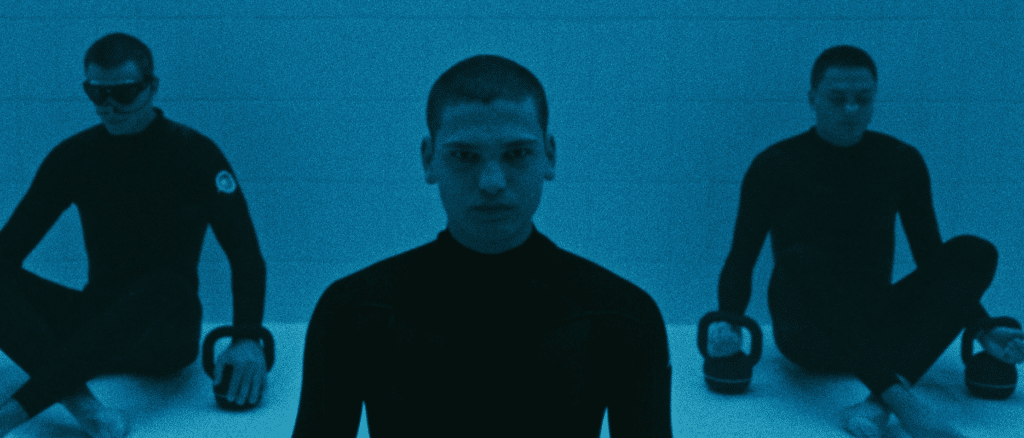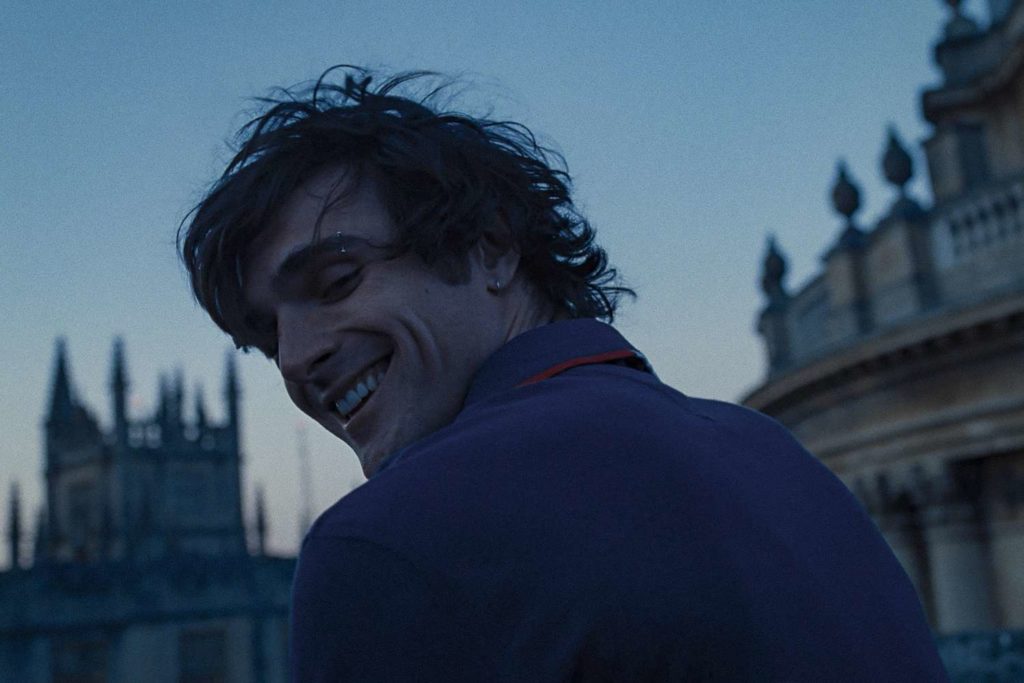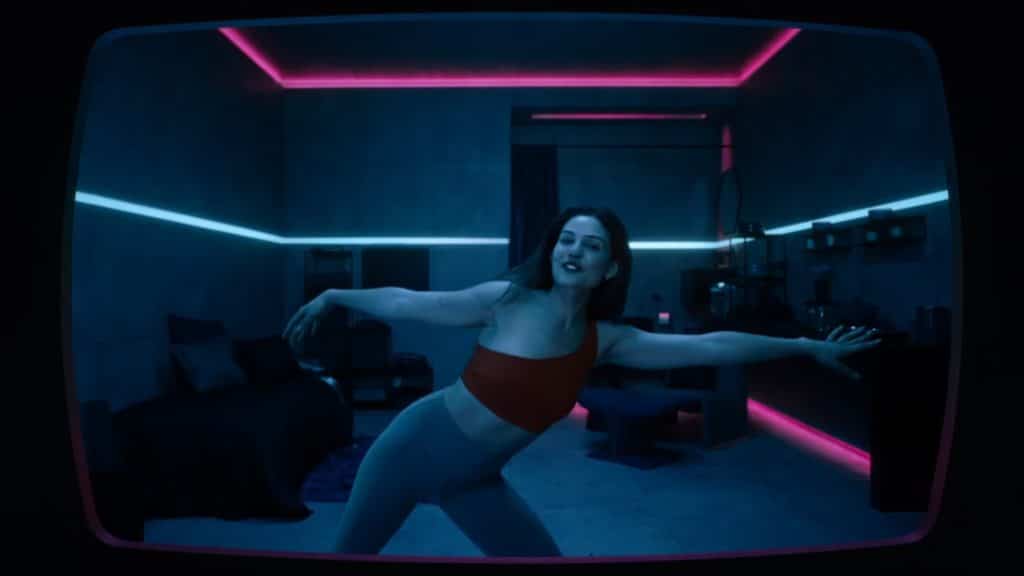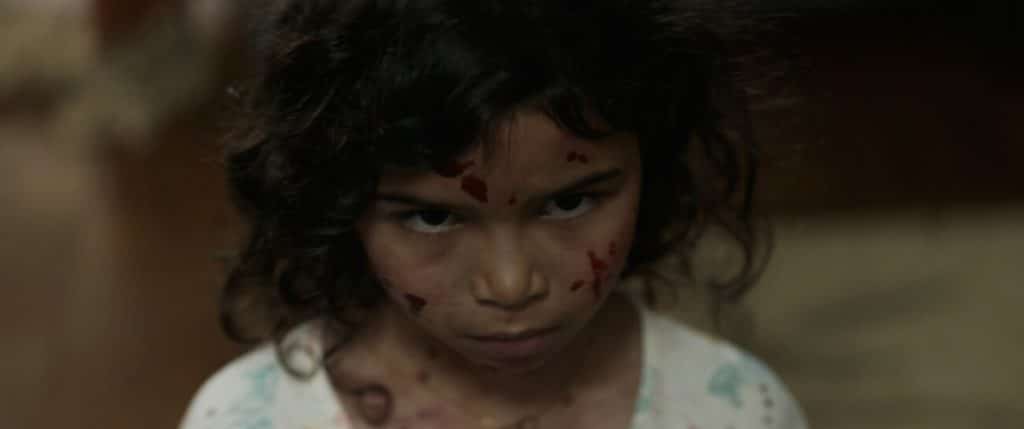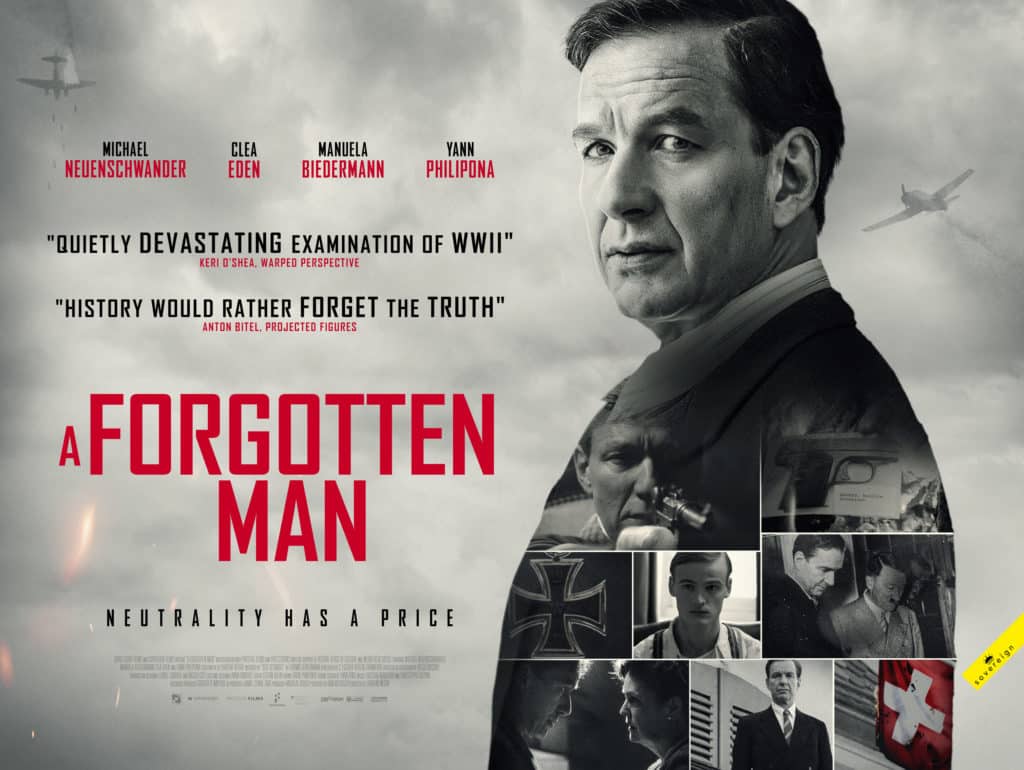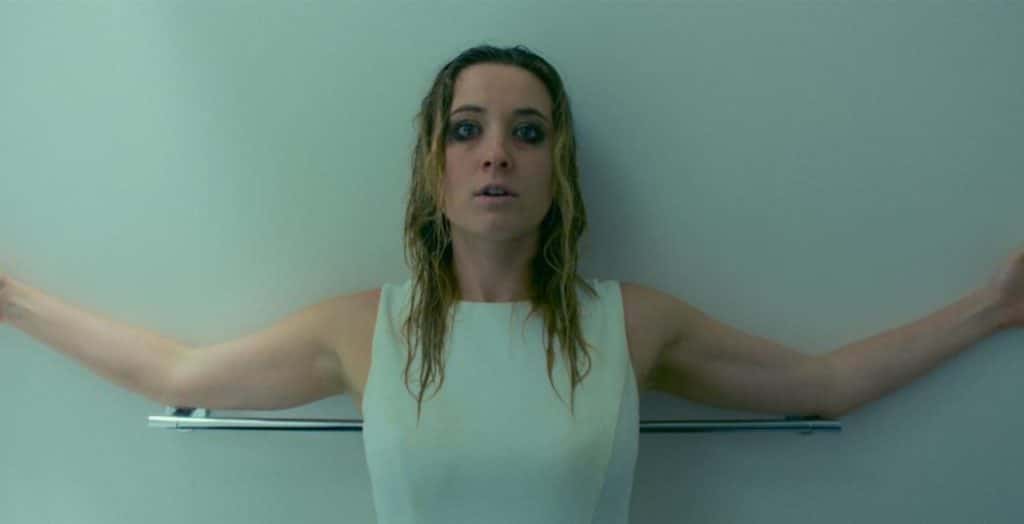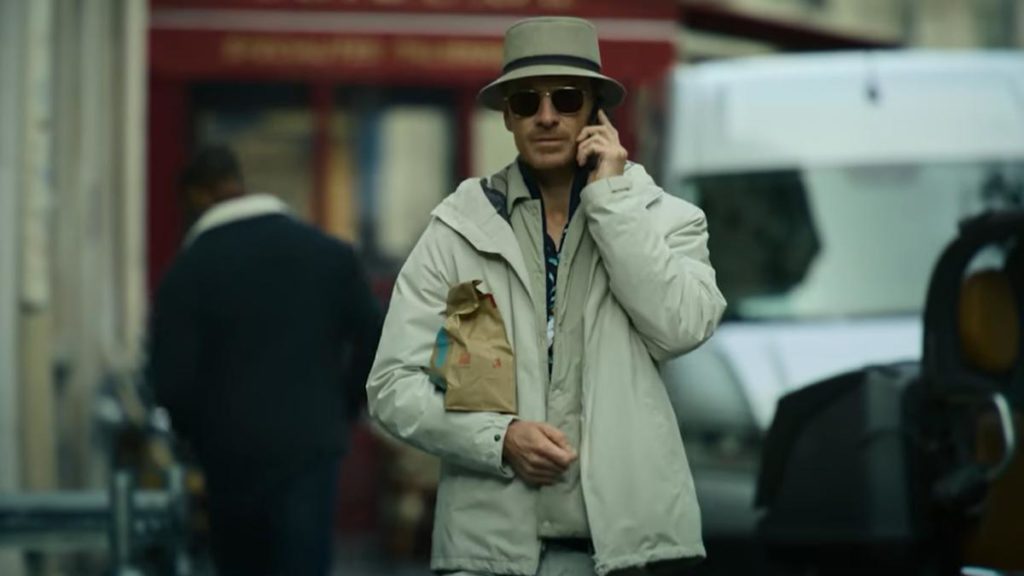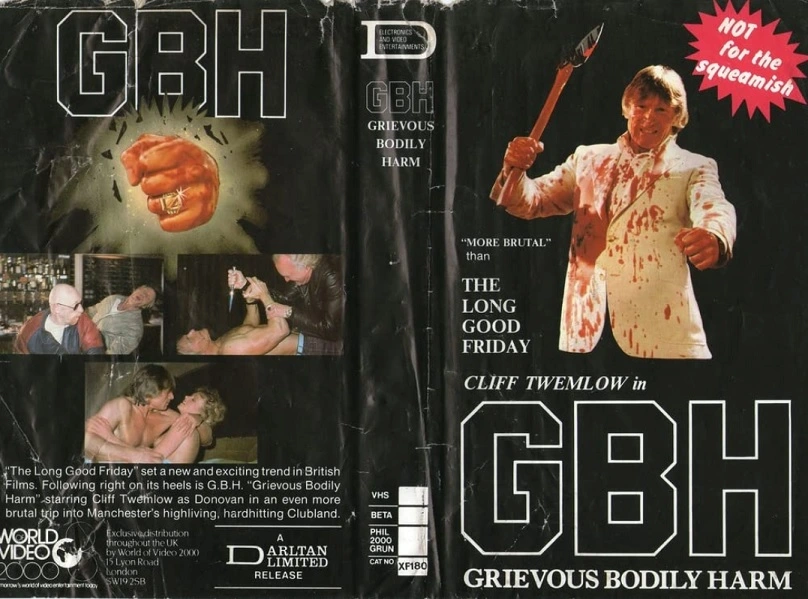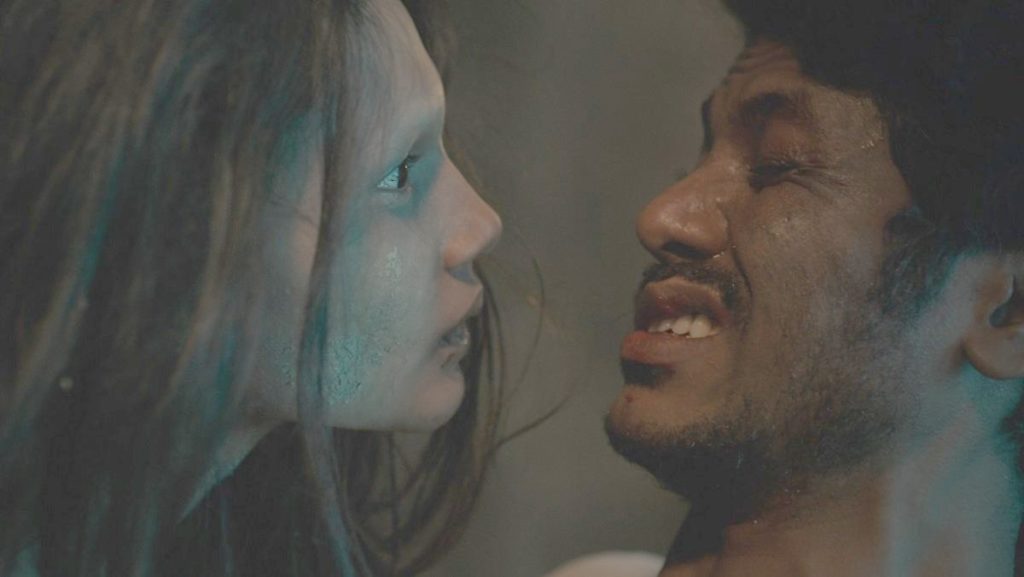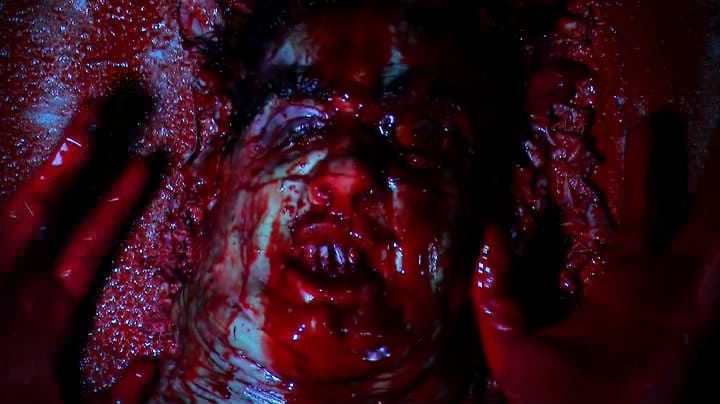
Well, Adam Chaplin certainly doesn’t mess about. If the opening few minutes are to be taken as a calling card, then this is nothing if not an honest film: the first ‘characters’ we see are in the process of being decapitated, their faces are getting pummelled, blood is flowing – all, as of yet, inexplicably. I suppose you could say this film wears its heart on its sleeve, and at the expense of its plot, which seems to have been pencilled in around the murder set pieces.
But we get some pointers as we move on: here’s a woman, chained up and being menaced by a…let’s go with masked madman, given he doesn’t seem too interested in finding a peaceful solution to his evident disagreement with this woman. It seems this isn’t the first woman he’s menaced, and isn’t likely to be the last, unless he is stopped somehow. Luckily enough, elsewhere in this grotty, lowbrow-in-the-late-80s urban nightmare, there seems to be an avenging figure doing the rounds. This guy, the Adam Chaplin of the title (also co-director/co-writer, Emanuele De Santi) seemingly has two modes. These are: brooding, Gothic introspection, and limb ripping, eye-rolling rage and shirt-shunning six pack: think The Story of Fabi-o. And fair play to Adam, as these modes will see you a long way. To head off any doubt that he’s here for big V Vengeance, he leaves behind a calling card: a big ol’ inverted cross in blood, to match his scar, which of course he has, of course he has a big inverted cross scar. It’d be weird if he didn’t, frankly.
Okay, so are there any good guys in this particular universe, seeing as our Mr. Chaplin is obviously an ambiguous anti-hero with a back story? Well, ostensibly; we see some cops, heads still on for the time being, and momentarily there’s an embittered detective, except it turns out he’s not averse to unorthodox methods of his own. There’s soon also a small squad attempting to intercept Adam Chaplin, one of whom is a face-painted goon for hire. But the whole film is so very clearly a vehicle for Chaplin to face off with the masked madman, and for a wholehearted appreciation of gore, that everything else feels like an afterthought. And that is okay. The plot may not be intricate, but nor was it in a lot of the Eurohorror so clearly beloved of De Santi and his team. With that in mind, this is review is shorter than most of the reviews we run here, for the simple reason that I feel like I’m actually reviewing a ninety-minute run of kill scenes but trying not to spoiler them, as the kill scenes are the point.
Clearly operating on a low budget, De Santi has successfully made his film look like a kind of late 80s, or early 90s (at a push) DTV horror – with washed-out colours, grainy appearance, oddly overdubbed dialogue and a strange sense of perplexed wonder. It prioritises its practical SFX for the biggest share of the running time, and it has the ultimate excuse of ‘it’s meant to look like that’ for any naysayers, but overall, there’s enough splatter here to keep things interesting, with only a few overly talkative lulls. But otherwise, no blushes have been spared when it comes to things like sheer imagination, velocity (limbs fly fast) and volume, though I half wish the film had dispensed with the occasional CGI it adds in, as this can almost-kinda jar you out of the vibe the filmmakers have otherwise worked hard to create. That said, certain parts of this film feel like a horror comic as much as a film, and the CGI fits better in those scenes.
Adam Chaplin is like a proto-version of Malignant spliced with The Crow, and directed by…oh, take your pick, Mattei perhaps, or Lenzi later in his career, honour-bound to get through a bulk purchase of severed heads and corn syrup, or a slightly more sophisticated kind of fake blood. It genuinely does feel like one of those films you find in your video store, once, then you can never find again, but you remember a face being peeled off and the fact that it carries on chatting as it slides to the floor. That sort of thing. You talk to others; they think they might have seen it, but they can’t remember what it was called, and now neither can you. There are so many films that have been lost in this way, and it’s nice to see this kind of homage being paid to them, even if Adam Chaplin itself seemed to have almost disappeared, too: made in 2011, it’s languished, somewhere, until being recently picked up by Screambox.
Truth be told, the film’s most likely appreciative audience is probably quite a narrow one; other, younger, more pampered film fans raised on Blumhouse and the Saw franchise will probably turn up their noses at this, because without a certain point of reference, it will likely drift wide of the mark. I’m also uncertain that is is, as claimed, the “most bloody movie ever” (surely that title must still go to Braindead, aka Dead Alive?) But it’s obviously a labour of love and it has a wealth of pretension-free, hyper violent strangeness to recommend it. There’s a lot to be said for that, and for just having a bit of fun, too.
Adam Chaplin is new to Screambox.
